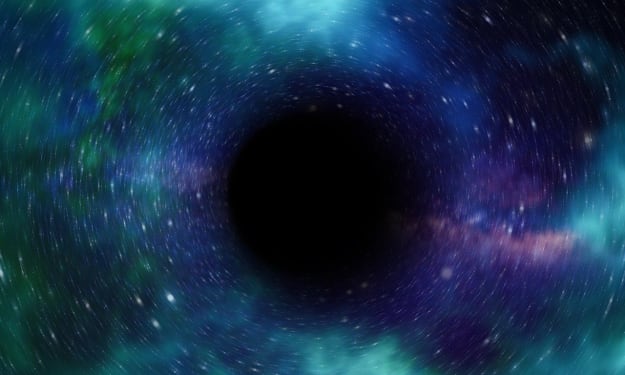Representation Matters in the Crossroads Trilogy by Kate Elliott
An entire series populated by people of color deserves to be more widely read

What if 99% of Europe had been wiped out by the plague in the 14th century, and the remaining non-white peoples of the planet shaped almost all of human history? That was the premise of Kim Stanley Robinson’s alt-history novel, “The Years of Rice and Salt”. While this review isn’t about that book, it provides a way to shift your thinking to a world made up solely of people of color.
A world that isn’t just Wakanda, or that just pays tribute to a single culture. A world where there are no token characters, stereotypes, or tropes. A world made up of multiple cultures that both cooperate and clash. A world where we, as readers, are treated to the idea that representation not only matters, it’s the only thing we’ll read.
The only major character in Kate Elliott’s Crossroads trilogy who is white is a demon. An unnatural being to be feared, shunned, abused, enslaved, murdered. She isn’t really a demon – just a girl very far from home – but when someone with her pale skin and light hair appears in societies made up of every shade other than white, this is what happens. Sound familiar?
The more educated or well-traveled of the inhabitants of The Hundred know that pale-skinned people are just foreigners – outlanders – but that doesn’t mean they’re trusted. Or welcomed. Everyone prefers
“…good, handsome Hundred folk, dark skin, black hair, brown eyes.”
The Hundred is the world that the three books revolve around, but other civilizations are introduced and explored in relation to The Hundred. The Silvers are outlanders who have settled in The Hundred and are partially integrated.
“The Silvers treat their womenfolk like slaves, didn’t you know that? Always under guard. Can’t walk out on their own, or show their face. Bodies completely covered in those loose robes, which is peculiar, if you think about it.”
“The men do look funny,” agreed Tenor, “with those pulled eyes and their hair all tied up in cloth like women sometimes do.”
The Qin are people clearly based on Asian ethnicities. They’ve conquered the people around them, but a popular leader is forced by politics to flee his land. He makes his way with his wife and small army to The Hundred to begin a new life, and plays a major role in re-shaping that society.
The people of The Hundred are divided into eight races, created by the Four Mothers: Firelings, Delvings, Wildlings, Lendings, Merlings, Dragonlings, Demons, and Humans. Some are rarely seen, one is never seen. The concept of multiple races is important because even though Elliott created a fictional world populated by people of color, she never belabored the point. It’s just a straightforward fact of life, and there is no awkwardness in any portrayal.
In fact, all of the physical characteristics of the people in this fantasy series play second fiddle to deep character studies, rich world building, and original fantasy concepts. This series is worth reading on many levels.
The Hundred is a complex and egalitarian society where women are not subservient. They work as reeves alongside men, flying over the land strapped to giant eagles to keep the peace and settle disputes. The inhabitants worship the seven gods created by the four mothers, and understand the importance of numbers. They all wonder where the nine Guardians have gone. They used to protect the land, and there is a growing but vague menace that could use the justice and insight of the Guardians’ third eyes and second hearts.
The stormy ocean, soaring mountain ranges, and the wide plain of the Lend that serve as the borders aren’t enough anymore to protect The Hundred from its enemies, both external and internal. Good has turned to evil, and evil starts out as good. It’s a complex story, full of politics, intrigues, battles and characters just trying to survive and live good lives. The books also include a map of The Hundred. This makes my geeky heart sing.
Kate Elliott’s first book in the series, “Spirit Gate”, was published in 2006. “Shadow Gate” came out in 2008, and “Traitor’s Gate” completed the trilogy in 2010. Elliott is a masterful fantasy writer. Her epic Crown of Stars series – 7 fat books! – is as complex and nuanced as Tolkien, and she’s been a finalist for the Nebula Award and the World Fantasy Award. Well known in the fantasy genre, she deserves to be more widely read among general audiences.
What I would most like to see, however, is the Crossroads trilogy made into a film series, along the lines of “Game of Thrones”, “The Lord of the Rings”, “The Witcher”, et al. Representation for people of color is growing on screen, but just imagine a fantasy series so big in scope that it could employ every performer of color in Hollywood and would have to bring new ones into the fold due to sheer scale.
That’s the kind of representation I want to see.
About the Creator
Maria Shimizu Christensen
Writer living my dreams by day and dreaming up new ones by night
Also, History Major, Senior Accountant, Geek, Fan of cocktails and camping






Comments
There are no comments for this story
Be the first to respond and start the conversation.